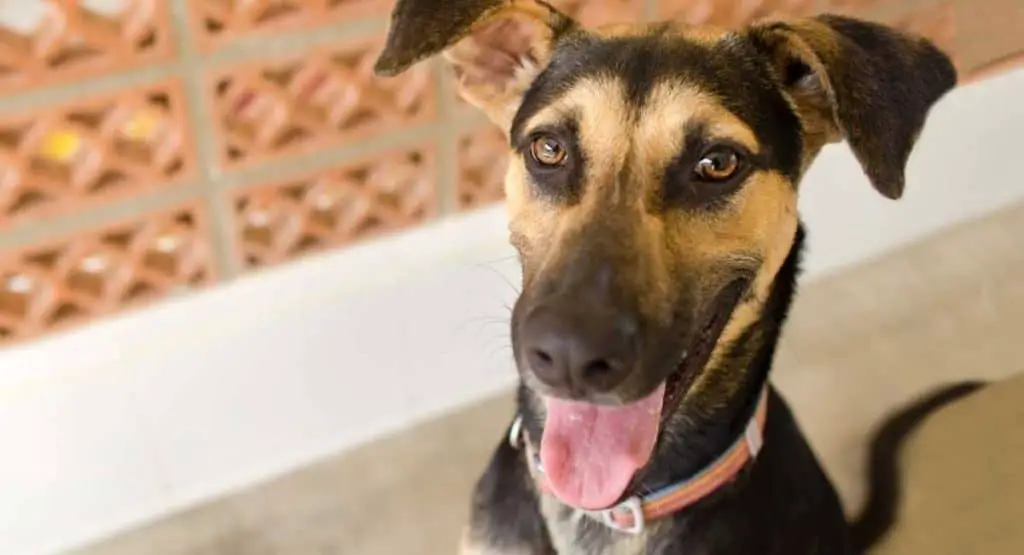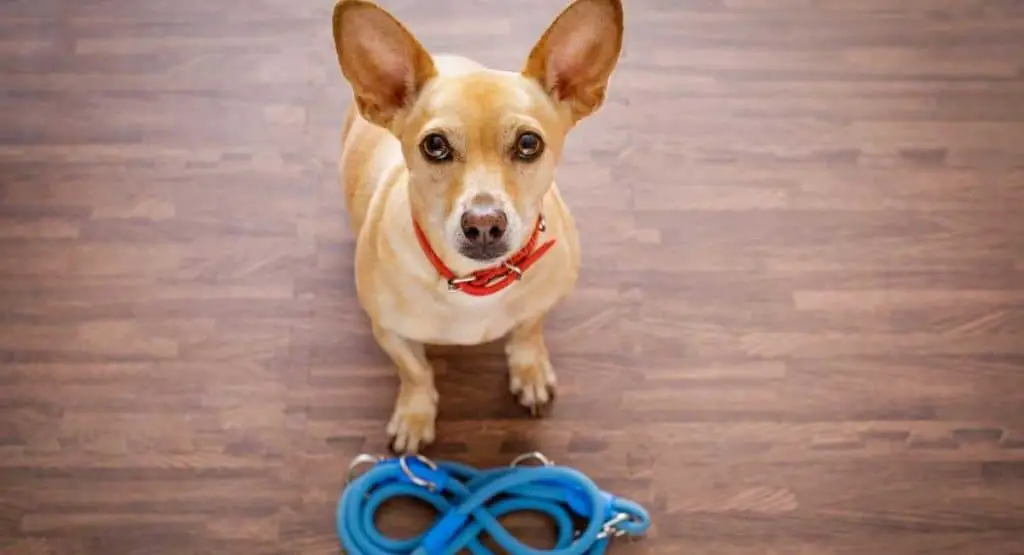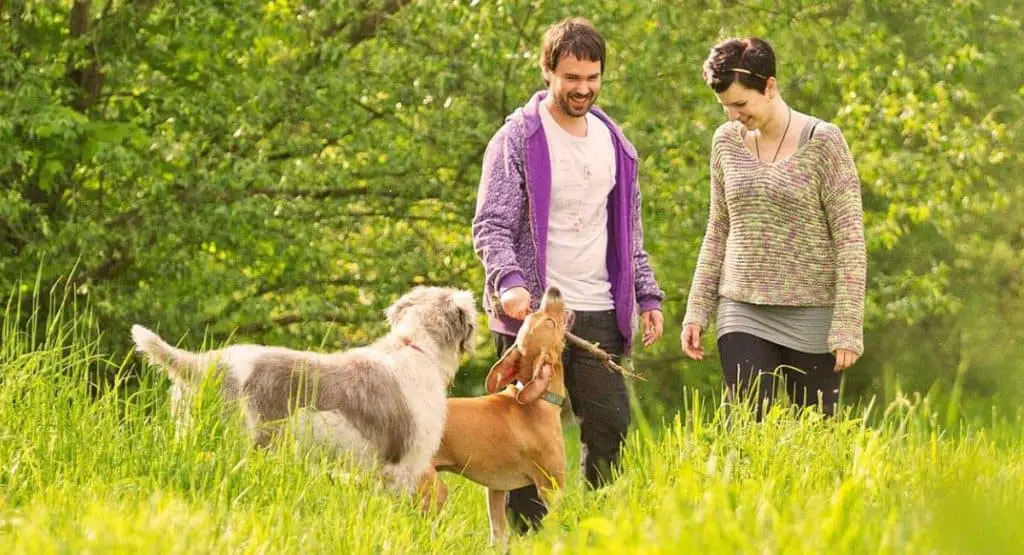Ask any dog owner and they will tell you that dogs are the BEST pet. Dogs are playful, loyal, and protective, and they’re not called Man’s Best Friend for no reason. They also happen to be one of the first animals that were domesticated by humans.
Dogs promote a healthier lifestyle in their owners, forcing them to go on regular walks and get moving.
Dogs are just fun to be around, and the joy and companionship they bring are unmatched, but the more time you spend with your dog, the more dependent they get.
These needy dogs are referred to as clingy dog breeds, or “velcro” dogs.
These dogs attach themselves to their owners, and their happiness revolves around them.
This means you have to be extra careful, because if you don’t provide them with adequate attention, you will end up with an unhappy dog.
Disclaimer: The Can My Dog articles contain information based on the individual research and opinions of the author of the site – who just so happens to be a dog. How you utilize the information given is completely up to you. Proceed at your own risk.

The 6 Clingy Dog Breeds
The most clingy dog breeds just so happen to be some of the most popular dog breeds out there too. Let’s take a look at what some of these needy breeds are:
Vizslas
The Vizsla is a prime example of a velcro dog. These dogs are particularly popular for hunting and enjoy the outdoors. At the same time, they follow their owners wherever they go.
These dogs just enjoy being by their owner’s side, and the companionship is a constant comfort for this pooch.
You won’t find many Vizsla owners complaining though, because the dog is very loyal. It serves as a great guard dog and is very affectionate, always looking for attention and love.
French Bulldogs
The French Bulldog is a demanding dog. If you refuse to show it love and affection, it will demand it. After all, like all bulldogs, the French Bulldog is headstrong and vocal about their wants.
This particular breed doesn’t grow to be too big, but it is strong. It is also playful, especially as a pup. So, be ready to dedicate a lot of time to it if you decide to get one.
It will be a handful, always seeking your attention and wanting to play with you.
Chihuahuas
Chihuahuas might be small in size, but they have big personalities and a lot of energy. The breed is loyal and usually wants to be around its owner at all times.
They will let you know if they aren’t getting the attention they want, and most pack a fierce (high-pitched) bark that they are not afraid to use.
Most owners that own a Chihuahua tend to keep it by their side most of the time. This also has developed a dependency in the breed through the years. Plus, the miniature size of the dog makes it reliant on its owner for many things.
German Shepherds
At first glance, the German Shepherd would seem like an independent, strong dog. It grows to be much bigger than the other dogs on our list. However, they can be very protective and cling to their owner.
The dogs are genetically-bred to be loyal and are always craving to be by their owner’s side. Both characteristics make it a great guard dog, a reason why it is one of the more popular dog breeds. It also makes for a great cuddle companion and enjoys the affection.
Pugs
The Pug is an expressive dog that may seem confident, but is in a fact super-clingy and affectionate dog breed. These dogs need to please their owner and will always seek their attention. Pugs are also very stubborn and will fight for it when it needs the love.
While it enjoys attention, the Pug won’t mind if you have other pets in the house. As long as it gets its share of attention, it will actually come to enjoy the other animals around. Pugs are also small and get along well with kids.
Italian Greyhounds
The Italian Greyhound has a spirited personality. They may look timid, but they are headstrong and thrive on affection. They easily win the hearts of families that they live with because they love to cuddle.
It doesn’t take too long for the greyhound to bond with its owner. Unlike the pug, Italian Greyhounds do not like sharing their owner.
You might find it difficult to keep another pet in the house because the greyhound will warrant all your attention. The stubbornness of the dog at times makes it difficult for you to do anything apart from it.
What Makes a Dog Clingy?
Besides its breed, here are some reasons why clingy dog breeds have their personalities:
Your Behavior Towards Them
Dogs become accustomed to our behavior towards them. If you let them sleep on your bed, pat and hug them every time you see them, they expect the behavior to continue. Dogs are engineered to be affectionate and loyal. The more love you show them, the more they will return to you.
Keeping this in mind, you want to make sure that you can continue to show your dog affection and care. If you decide to limit it or stop, most dogs will let you know and act up from time to time to get your attention.
Visual or Hearing Problems
As dogs age, they tend to get more clingy. This is especially true in dogs that experience hearing and vision loss. The process is scary and stressful for them and they will rely on you more for extra comfort.
Sudden sickness also has a similar effect on dogs. They get confused and scared so clinging to you is a way for them to cope with the change. If you notice your dog, who wasn’t too clingy before, is clinging to you, take it to the vet for an evaluation of their health.
Boredom
You need to keep your dog active, mentally and physically. If you don’t, they will just follow you around in your home as a source of entertainment. Take them out for a walk regularly and play with them to keep them active.
If you can’t, then look for indoor games to keep them stimulated. This could be hiding treats around the house for them to find, providing them with puzzle games, or playing tug-o-war every now and then.
Moving to a New Place
A new home and neighborhood will likely have your dog feeling stressed, and this is especially true for the 6 most clingy dog breeds The new surrounding will have them constantly wanting to be around something familiar – you. So, be sure to give your dog a little extra attention if you ever plan to move. At least until they develop a routine and settle down in your new home.
There is a thin line between your dog being clingy or experiencing separation anxiety. The latter is when your dog gets anxious and starts to panic when its owner leaves.

Separation anxiety will lead to more destructive behavior such as chewing and destroying household items, trying to escape, and any type of inappropriate behavior when you aren’t home (things they wouldn’t do otherwise). It is the dog’s natural instinct to do this when it feels anxious.
It won’t be hard to tell if your dog is going through separation anxiety because it acts up so much that it’s hard to miss it. You will likely need to get professional help, taking it to behavior therapy as soon as you see it display any signs of separation anxiety.
Clingy dogs typically don’t display destructive behavior, they just follow you around from room to room and want to be next to you. Most owners don’t think twice about their dog’s clinginess. However, if it does become bothersome, I have some tips that can help you limit your dog’s clingy behavior.
Ways You Can Reduce Your Dog’s Clinginess
Train Them to Be Less Reactive to Your Movements
Dogs are generally jumpy and react to their owner’s movements. You will notice that dogs become alert as soon as you get up to go from one room to another or put the remote down after watching TV. They see this as a sign that you could potentially take them for a walk or do something more interesting for them.
You need to desensitize your dog to movements that excite them, warranting them to get up and follow you. Note the ones that alert them and every time you do them proceed to do something mundane. After some time, your dog will no longer react to those particular movements.
Teach it to Stay
Sometimes your dog following you around can get to you. They act like your shadow, which can be cute… until you trip over them. You can avoid your dog getting in your way by teaching them the “stay” command.
Dogs are fast learners, let them know you want them to stay while you get up and go to another room. Be vocal and say the command before leaving. You can start by moving from one area of a room to another, short distance, and see how it reacts to the command. With time, you can ask it to stay and go to another room.
Use positive reinforcements, especially praise and treats, when you see your dog listen to you. It will go a long way with them and condition them to listen to your stay command in the future.
Play Games That Promote Independence and Distance
Use your playtime as an advantage to build your dog’s independence. You should play games like hide and seek, which requires your dog to work alone to find you. Games that promote distance such as fetch are also good. Your dog will learn that doing things on its own can be fun.
Have a Special Place for Your Dog in Your Home
Your dog should have an area in the house that is his own, such as a mat or bed, or perhaps even a spare room. Train the dog to sleep and relax in the special area by asking it to go there every day. At least until it learns to go there on its own.
Once it understands that it has its area, the dog will likely go to it every time it needs to sleep or lounge. It will no longer need to be around you to do those things.
The Difference Between Separation Anxiety and Clinginess
It is important for dog owner’s to identify whether their dog is clingy or has separation anxiety. The Journal of the American Veterinary Medical Association states that dogs that are heavily dependent and attached to their owners have higher chances to develop separation anxiety, but it isn’t inevitable.

The signs of separation anxiety can help you determine whether your dog suffers from it or not. Remember, if they are calm when they follow you around, they just want to cling to you. Once anxiousness kicks in, they will get jumpy and hyper when following you around.
Tips to Deal With Your Dog’s Separation Anxiety
The following tips will help clingy dog breeds feel less anxious when it comes time for you to leave:
- Take your dog for a walk before you leave: Plan your day so you can take your dog for a light walk before you have to go out. The outing will allow the dog to calm its nerves and also tire it out a little.
- Don’t make leaving a big deal: Don’t coddle your dog before leaving. Just pat it and head out. Make it seem like you leaving is business as usual, don’t make a big deal out of it. If you have to go somewhere and want to coddle your dog, do it well before you have to leave.
- Stay calm: If you notice your dog getting anxious as you are about to leave, stay calm. Your dog sees you as a leader, your calm demeanor will transfer to the dog.
- Start small: Leave your dog for five minutes and go to a different room in the house. Make sure it doesn’t follow you. Then increase it to ten minutes and so on. Do it until your dog is comfortable being on its own.
The Clingy Conclusion
Dogs become a big part of the lives of their owners. They are a huge responsibility, and new dog owners should take the time to research dog breeds and get to know their needs.
If you want, or already have, one of the six clingy dog breeds mentioned above, be sure to give your dog the due attention it requires. Otherwise, you are setting it up for anxiety and forcing it to act up.
Love you guys,
JTB
P.S. If you’re new to this world, you may want to check out my Ultimate Guide for First Time Dog Parents. It’s a great reference to get you started on this journey.
This article has been reviewed by our Editorial Board and has been approved for publication in accordance with our Editorial Policies.
